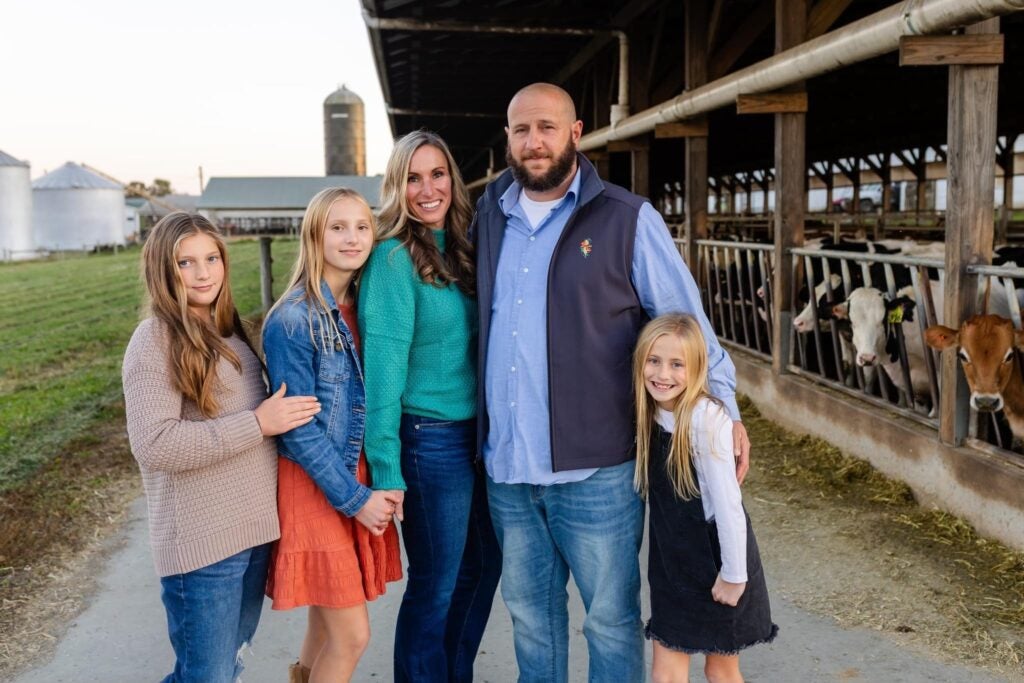Farmers and ranchers around the world face increased heatwaves, droughts and heavy rainfall, making it harder to grow livestock and crops. This means less financial security for farm families and, globally, bigger threats to people’s access to nutrition.
Growing Returns
Selected tag(s): food security
Why lowering livestock methane emissions will help slow climate change and benefit farmers
Without financing solutions, farmers have to leave money — and environmental benefits — on the table
This op-ed was originally published in Hoard’s Dairyman. Since its initial publication, the financial uncertainty for farmers engaging in conservation practices has grown substantially. Ongoing trade negotiations, tariffs and blocked funding for existing U.S. Department of Agriculture contracts for conservation expenses and the uncertainty of future funding for conservation programs intensify the financial challenges faced by dairy farmers.
Dairy farmers are already part of a high-risk industry — the experience shared below shows how difficult it can be to align funding opportunities with farms’ financial needs. Now, farmers are being left to absorb that risk with less support. To continue producing food for their communities and responsibly stewarding natural resources, farmers will need more flexibility from financial institutions and greater investments from stakeholders advancing sustainable agriculture.
By Alice Crothers
World Food Day has come and gone, with food security still out of reach for people and planet
Every October, the global community comes together to celebrate the founding of the United Nations Food and Agriculture Organization as World Food Day. Taking stock, it is plain to see just how far we still have to go to achieve the FAO’s founding mission to defeat hunger and improve nutrition and food security for the planet.
The obstacles to achieving this goal are many and complex: the COVID-19 pandemic, the war in Ukraine, and the ongoing challenges of conflict, water shortages, flooding, and rising food costs are just a few. However, they all share one thing in common: they are exacerbated by the existential threat of climate change.
With less than a month to go before the 27th United Nations Climate Change Conference (COP 27) in Egypt, world leaders must consider the importance of addressing food insecurity as a part of solving the climate crisis.
Why we need a new era of collaborative conservation
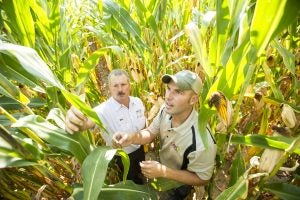
This year’s Gulf of Mexico dead zone is the largest ever recorded, affecting 8,776 square miles – similar in size to the state of New Jersey.
Agriculture – from fertilizers and livestock production – is a major source of the nutrients that cause these harmful algal blooms in our lakes and coastal areas. Fertilizers are required to grow food, but we know that making farming practices more efficient and creating natural buffers and filters around farms can reduce runoff.
Farming is already risky business, with unpredictable weather, tough global competition and fluctuating commodity prices.
Implementing conservation practices at scale without hurting growers’ productivity requires understanding the challenges of different sectors and bringing together their expertise and investment. It’s a collaborative effort, and we must recognize that we are all working around a common goal: a more sustainable food system.
This month, Environmental Defense Fund is launching a series of public events – in Bozeman, St. Louis, and Des Moines – to highlight, advance, and celebrate collaborations among private landowners, food and agriculture companies, policy makers, and the public.
Why sustainable food can’t be a luxury
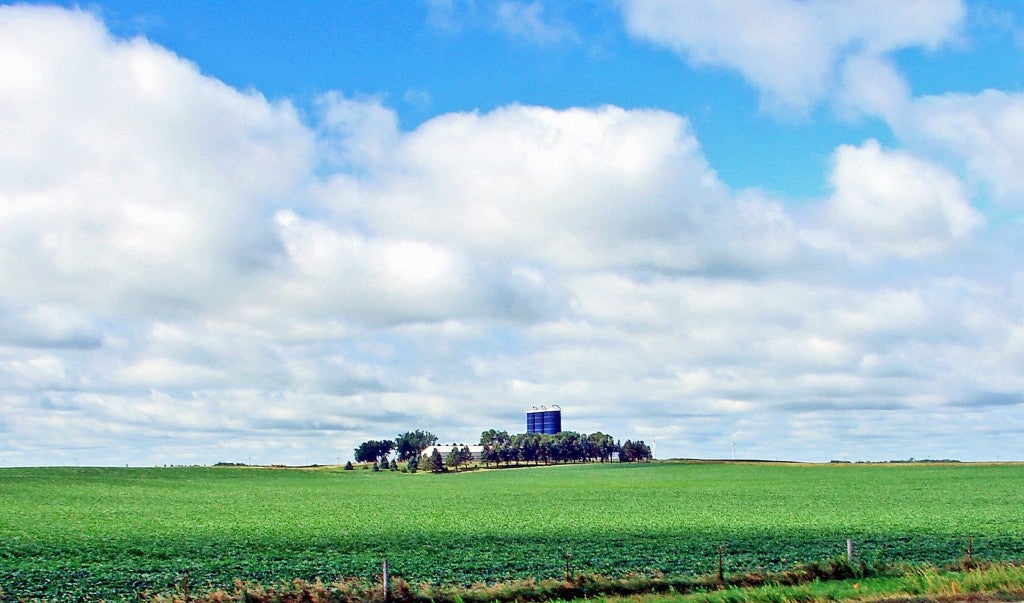
Photo credit: Don Graham
The results are in, so food companies take notice: American consumers are educating themselves on our food system, and they’re increasingly asking for sustainably produced foods. That’s a key takeaway from the International Food Information Council (IFIC) Foundation’s new report on consumer attitudes toward food.
It’s an exciting trend, since what we buy sends a signal across the supply chain for farmers to grow ingredients in ways that protect our natural resources, and for food companies to source sustainably grown products. Sustainably produced food also supports food security, which is essential to our continued prosperity.
Yet sustainably grown products are almost always more expensive to produce than their unsustainable counterparts, which is why many farmers require a premium for changing their production practices to reduce environmental impacts.
To improve air and water quality and protect farmers’ livelihoods, sustainability can’t just be a luxury. Sustainable food production has to become business as usual.
Here’s why we’re well on our way to meeting that goal.
How this ag retailer is changing the entire U.S. food production system
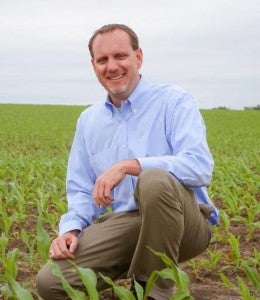
United Suppliers’ Matt Carstens
In 2014, Walmart challenged its suppliers to find ways to reduce fertilizer runoff from farms – which can cause air and water pollution and mean wasted money for farmers. The target was food companies whose supply chains use large quantities of fertilizer for commodity crops like corn, and the goal was to improve efficiency in their supply chains. Two years later, nearly 20 Walmart suppliers have signed on to the initiative, spawning a trend in which supplier commitments drive tangible changes on American farms.
At the heart of this fertilizer efficiency trend is Matt Carstens, VP of Crop Nutrients for United Suppliers and the force behind a sustainability platform for farmers called SUSTAIN, developed in coordination with Environmental Defense Fund.
SUSTAIN trains ag retailers on the best practices for fertilizer efficiency and soil health. As ag retailers are a primary source of advice for farmers, the retailers then bring this important knowledge to the farmers they serve.
SUSTAIN is proving to be popular as a way for food companies to connect directly with farmers in their sourcing areas. Thus far, Smithfield Foods, Campbell’s Soup, and Unilever are all using SUSTAIN as part of their sustainable sourcing efforts. And Kellogg’s is the latest big brand to jump on board, with an announcement today that they, too, will be using SUSTAIN.
I asked Matt to explain the reason for this trend, why ag retailers believe in SUSTAIN, and how he got involved in the ag retail world. Read More
Want to bring ag sustainability to scale? Collaboration, not confrontation.
 One year ago, the U.S. Department of Agriculture announced 10 “building blocks” for climate-smart agriculture and forestry, with the goal of reducing greenhouse gas emissions by over 120 million metric tons by 2025.
One year ago, the U.S. Department of Agriculture announced 10 “building blocks” for climate-smart agriculture and forestry, with the goal of reducing greenhouse gas emissions by over 120 million metric tons by 2025.
The agency’s focus on partnering with farmers and ranchers – as well as with the private sector – was a huge step in the right direction toward widespread implementation of climate-smart agriculture techniques and programs.
Tomorrow, USDA Secretary Tom Vilsack will announce another big investment in conservation stewardship and climate-smart agriculture approaches to advance the building blocks agenda. I’ll be joining Secretary Vilsack to talk about EDF’s partnerships within the agricultural supply chain and our collaborative approach to ag sustainability.
Working across public-private sector lines, through a collaborative approach, and with the entire ag supply chain is the only way to bring sustainability to scale while protecting farmers’ livelihoods.
Here’s what key sectors of the ag supply chain are doing – and can do – to improve water quality, reduce greenhouse gas emissions, and increase agricultural resilience. Read More
A newly re-energized sustainable ag movement
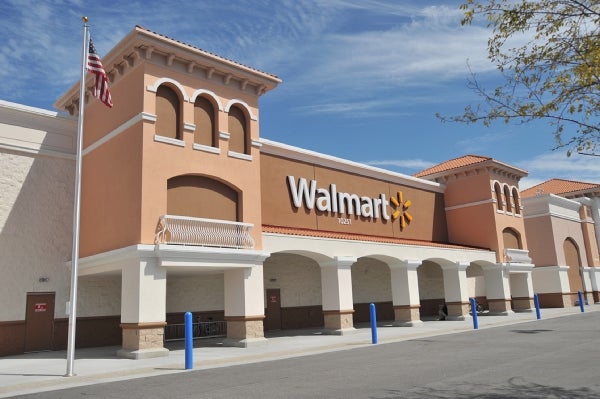 Last month I spent some time in Bentonville, Arkansas, at Walmart’s semi-annual “Sustainability Showcase,” a celebration of the company’s progress in implementing environmental initiatives.
Last month I spent some time in Bentonville, Arkansas, at Walmart’s semi-annual “Sustainability Showcase,” a celebration of the company’s progress in implementing environmental initiatives.
During the showcase, Walmart CEO Doug McMillon invited the executives of major Fortune 500 companies in attendance to share their insights on sustainability – and I was inspired. On stage were the CEOs of Cargill, Kellogg, as well as Dr. Mehmood Khan, Vice Chairman and Chief Scientific Officer, Global Research and Development for PepsiCo.
I was struck by how open and bold these CEOs were in recognizing the need and their responsibility to help solve major environmental challenges such as climate change and water pollution. McMillon, for example, started the discussion by explaining that 20 percent of lakes in Minnesota are not drinkable, a situation that “touches people personally every day.”
Here’s my take on the top two agricultural highlights – and why I’m more confident than ever that sustainable farming initiatives will improve water and air quality across the U.S. Read More
Organic or conventional. Which production system can feed the world sustainably?
 Organic. Conventional. Locally grown. And the list goes on. The seemingly age-old debate of what system can best feed and sustain the planet is again at the front of my mind on National Ag Day.
Organic. Conventional. Locally grown. And the list goes on. The seemingly age-old debate of what system can best feed and sustain the planet is again at the front of my mind on National Ag Day.
When I spoke at a recent Food Entrepreneurship Symposium event at Princeton University, an audience member asked me if organic is the best path forward to feed the planet sustainably. At Commodity Classic in New Orleans earlier this month, I spoke with growers about whether conventional ag is the way to feed a growing population.
My answer: there is no silver bullet when it comes to sustainable agriculture. There is no single system, no one-size-fits-all prescription that can solve our food security and environmental sustainability challenges.
That’s why we cannot afford to shut the door on any idea, or on any system of food production. Here’s how organic and conventional compare on yields and environmental impacts, and why we need both systems, local and global production, and big and small farms in order to protect food security and the planet. Read More
New program verifies claims of fertilizer efficiency tools
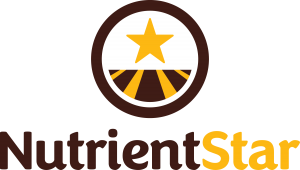 Big name food companies are starting to source sustainably grown grains to increase transparency and reduce climate and water risks in their supply chains. Precision agriculture tools can help farmers meet this new demand, but it’s difficult to tell which ones perform as advertised because little data exists – or is publicly available – to prove a tool’s effectiveness on the ground.
Big name food companies are starting to source sustainably grown grains to increase transparency and reduce climate and water risks in their supply chains. Precision agriculture tools can help farmers meet this new demand, but it’s difficult to tell which ones perform as advertised because little data exists – or is publicly available – to prove a tool’s effectiveness on the ground.
That’s why EDF developed NutrientStar, an independent, science-based program that verifies the fertilizer efficiency claims of products on the market.
NutrientStar identifies fertilizer management tools that effectively keep nutrients on the farm, reduce fertilizer losses, and improve air and water quality. Scientific assessments conducted by an independent review panel provide valuable information on a tool’s performance, and on-the-ground research trials show performance in working fields. As tools and products are reviewed, the analysis will be posted on the NutrientStar website. Tools and products assessed to date include:
- Adapt-N (made by Agronomic Technology Corp.), an online software program that uses a linked crop model and soil model to estimate nitrogen rates for individual fields or areas within fields.
- Fertilizer management products including N-Serve® (made by Dow AgroSciences); AGROTAIN®, AGROTAIN PLUS®, and SUPER U® (made by Koch Agronomic Services).
Here’s what this new program means for the entire commodity crop supply chain – from farmers to food companies. Read More










